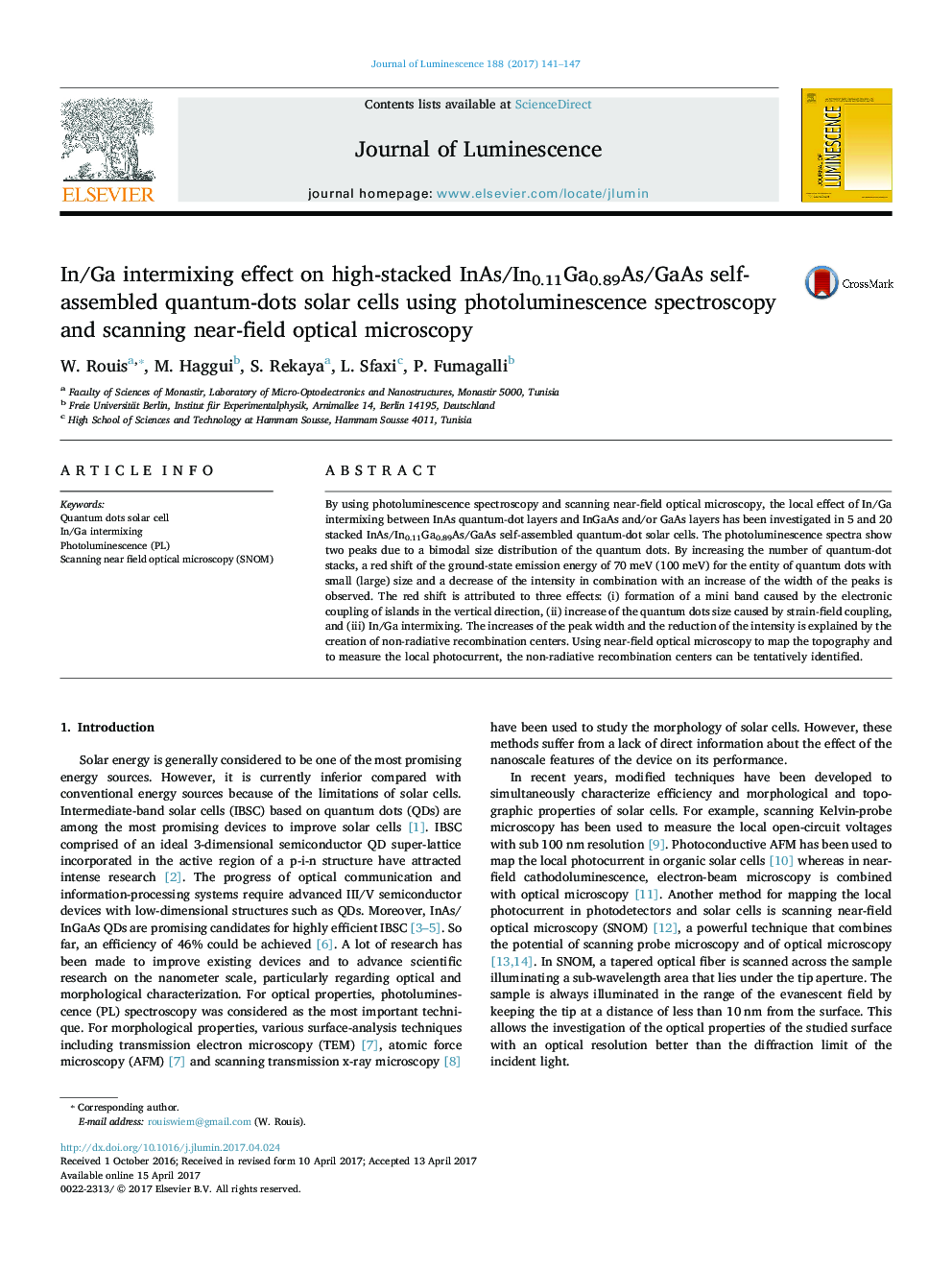| Article ID | Journal | Published Year | Pages | File Type |
|---|---|---|---|---|
| 5397741 | Journal of Luminescence | 2017 | 7 Pages |
Abstract
By using photoluminescence spectroscopy and scanning near-field optical microscopy, the local effect of In/Ga intermixing between InAs quantum-dot layers and InGaAs and/or GaAs layers has been investigated in 5 and 20 stacked InAs/In0.11Ga0.89As/GaAs self-assembled quantum-dot solar cells. The photoluminescence spectra show two peaks due to a bimodal size distribution of the quantum dots. By increasing the number of quantum-dot stacks, a red shift of the ground-state emission energy of 70Â meV (100Â meV) for the entity of quantum dots with small (large) size and a decrease of the intensity in combination with an increase of the width of the peaks is observed. The red shift is attributed to three effects: (i) formation of a mini band caused by the electronic coupling of islands in the vertical direction, (ii) increase of the quantum dots size caused by strain-field coupling, and (iii) In/Ga intermixing. The increases of the peak width and the reduction of the intensity is explained by the creation of non-radiative recombination centers. Using near-field optical microscopy to map the topography and to measure the local photocurrent, the non-radiative recombination centers can be tentatively identified.
Keywords
Related Topics
Physical Sciences and Engineering
Chemistry
Physical and Theoretical Chemistry
Authors
W. Rouis, M. Haggui, S. Rekaya, L. Sfaxi, P. Fumagalli,
